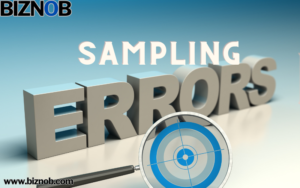What is a safe harbor?
If specific requirements are satisfied, a safe harbor is a legal provision that allows one to avoid or completely escape legal or regulatory guilt in certain circumstances.
The financial, real estate and legal sectors use “safe harbor.” The phrase “safe harbor” may also apply to a “shark repellent” strategy businesses use to prevent a hostile takeover; the business may deliberately buy a highly regulated business to make itself seem less appealing to the party contemplating an acquisition.
In addition to avoiding legal or tax requirements, safe harbors provide a less complicated way to calculate a tax result than what the exact wording of the tax statute specifies.
Understanding Safe Harbors
A company attempting to avert a hostile takeover may use a safe harbor approach. To make a takeover less appealing or lucrative for the acquiring business, a company may often adopt unique adjustments to its charter or bylaws that only take effect when a takeover effort is disclosed to or presented to shareholders.
Many laws or contracts have clauses about regulatory responsibility. For example, safe harbor protections shield management from responsibility for producing financial estimates and forecasts in good faith under the Securities and Exchange Commission’s (SEC) regulatory rules.
Similarly, website owners may shield themselves from copyright infringement lawsuits based on comments made on their pages by using a safe harbor clause.
Safe Harbor Types
Safe Harbor Plans for 401(k)s
Safe Harbor 401(k) plans provide easy, substitute ways to satisfy nondiscrimination standards. These retirement accounts were established in 1996 due to the Small Business Job Protection Act, enacted in response to the widespread practice of employers not offering 401(k) plans to their staff members due to the complexity of nondiscrimination regulations. These 401(k) plans provide employers with a streamlined product, shielding them from compliance worries.
Using Safe Harbor Accounting to Make Tax Returns Easier
Remodels are usually treated as capitalized improvements by the Internal Revenue Service (IRS), meaning that the value of the improvement must be claimed gradually over an extended period.
However, restaurants and shops often renovate their spaces regularly to keep their establishments looking modern and exciting. Consequently, the IRS permitted some merchants and restaurateurs to write off these expenditures as repairs, which may all be claimed as business expenses in the year they were spent.
The goal of accounting techniques for tax reduction is to lower taxes while staying within legal boundaries, not to evade them completely.
This led to a complex procedure for tax filers, who had to go through a lengthy set of criteria to determine which category their spending fit into. The IRS developed accounting techniques for qualified restaurant and retail enterprises to remove ambiguity.
These companies decide now whether to classify their renovation expenses as capitalized improvements or repairs. Businesses don’t have to worry about unintentionally choosing the incorrect option and facing penalties because of this’
An example
Assume that a company is losing money and is thus unable to claim an investment credit to demonstrate an accounting technique that assists a tax filer in avoiding a tax rule. It assigns the credit to a productive business eligible to receive it. The prosperous business transfers the tax savings to the losing business by leasing the asset back to it.
Conclusion
- It is a legal provision that can lessen or eliminate legal or regulatory liability under certain circumstances and with specific requirements met.
- The phrase also describes strategies businesses use to stave off a hostile takeover.
- A tax- or legal loophole-avoiding accounting technique is frequently called “safe harbor.”

























































